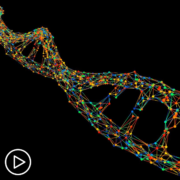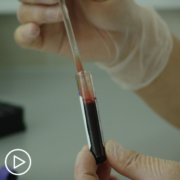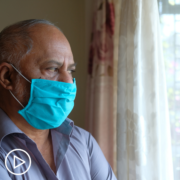Advocate for These CLL Genetic Tests
Advocate for These CLL Genetic Tests from Patient Empowerment Network on Vimeo.
Genetic testing results can influence a chronic lymphocytic leukemia (CLL) patient’s treatment options and provide a more in-depth understanding into their disease. Dr. Philip Thompson, a CLL specialist, reviews key tests that CLL patients should advocate for.
Related Resources

|

|

|
Transcript:
Dr. Philip Thompson:
I would say that I see a lot of patients that have previously seen an oncologist closer to home and then traveled to MD Anderson for a second opinion. And so, I can say that over the last three or four years, there’s definitely a significant change in the awareness of physicians in general about doing genetic testing for CLL.
So, in particular, almost everybody will get a FISH test, which I didn’t always see three or four years ago. And more patients are now having IGHV mutation status analysis done. The thing that I see that is very rarely done, though, is what we call next-generation sequencing, or NGS, that looks for mutations in individual genes, and most importantly, in the TP-53 gene that I mentioned.
So, I would – and the other thing that often isn’t done is what we call a carrier tag, which is a routine analysis of the chromosomes of the CLL cells. And it requires some special techniques for the lab to get it to work in CLL. But that can actually provide additional information compared to just FISH.
So, I would suggest to a patient, particularly if they’re gonna do a bone marrow biopsy on you, which is an invasive procedure, that you really try to get some clarity around what tests are going to be ordered on that beforehand. And if you’ve just been diagnosed and you’ve got early-stage CLL, you can make an argument about how many of these tests are absolutely necessary to start with. Because the biggest utility in these tests is in determining what type of treatment you’re going to have.
If you’re not immediately going to have treatment, they don’t necessarily change what your oncologist is going to do. They’re going to monitor you over time and see if your disease is getting worse or not. But I still think they’re useful to have the – a lot of them are useful, particularly the IGHV mutation status and FISH are useful to have at initial diagnosis. Because they give you a really good idea of what the biology of this disease is – this patient’s disease is like and how quickly they’re likely to progress, and that may change how frequently you monitor the patient.
But anyway, I would say it’s important to ask them what genetic testing you are gonna get. And that you ask – have an understanding of what can be ordered.
And in particular, if you’re going to get treatment, you must ask for TP-53 sequencing, FISH for 17-P deletion, and IGHV mutation status because those three things are essential to determine the optimal treatment that you have. And you shouldn’t feel shy about asking, are those things going to be done.





